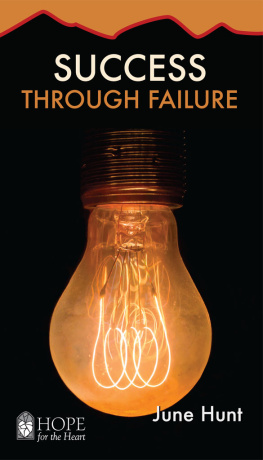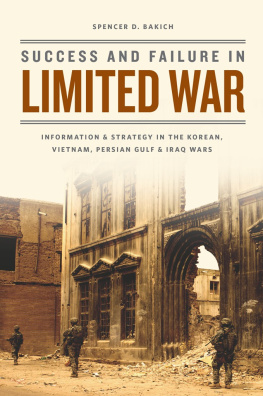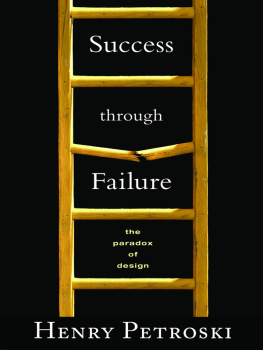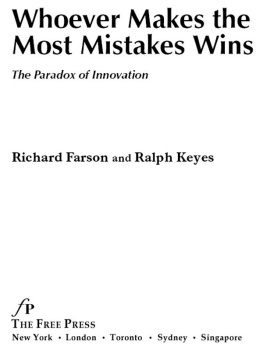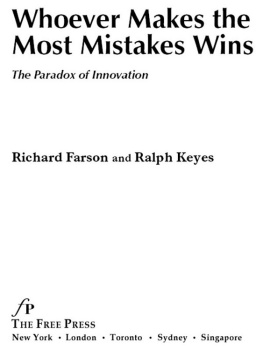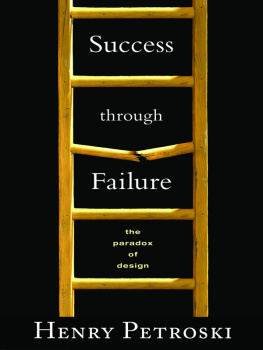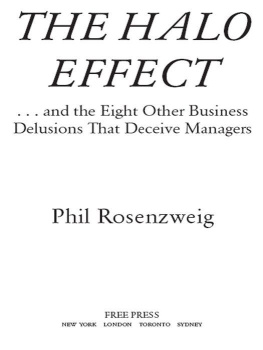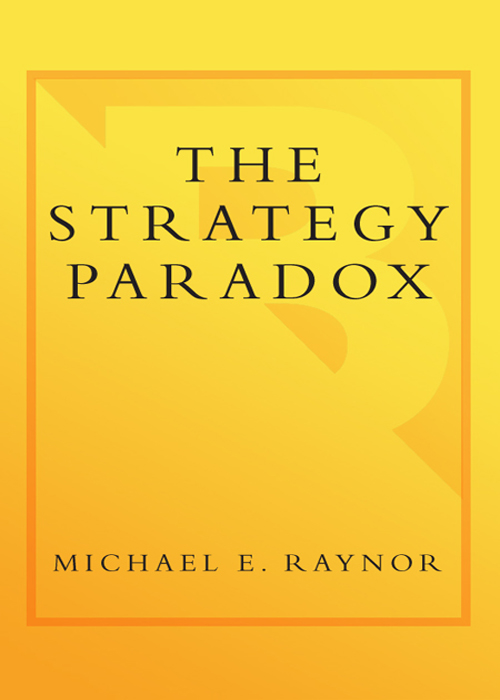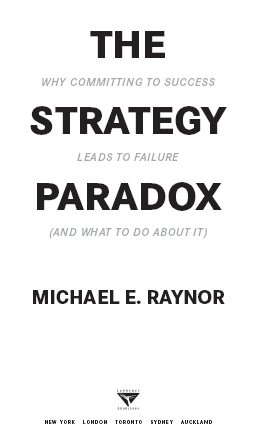Michael E. Raynor - The Strategy Paradox: Why committing to success leads to failure
Here you can read online Michael E. Raynor - The Strategy Paradox: Why committing to success leads to failure full text of the book (entire story) in english for free. Download pdf and epub, get meaning, cover and reviews about this ebook. year: 2007, publisher: The Crown Publishing Group, genre: Business. Description of the work, (preface) as well as reviews are available. Best literature library LitArk.com created for fans of good reading and offers a wide selection of genres:
Romance novel
Science fiction
Adventure
Detective
Science
History
Home and family
Prose
Art
Politics
Computer
Non-fiction
Religion
Business
Children
Humor
Choose a favorite category and find really read worthwhile books. Enjoy immersion in the world of imagination, feel the emotions of the characters or learn something new for yourself, make an fascinating discovery.

- Book:The Strategy Paradox: Why committing to success leads to failure
- Author:
- Publisher:The Crown Publishing Group
- Genre:
- Year:2007
- Rating:5 / 5
- Favourites:Add to favourites
- Your mark:
The Strategy Paradox: Why committing to success leads to failure: summary, description and annotation
We offer to read an annotation, description, summary or preface (depends on what the author of the book "The Strategy Paradox: Why committing to success leads to failure" wrote himself). If you haven't found the necessary information about the book — write in the comments, we will try to find it.
Why committing to success leads to failure (and what to do about it)
A compelling vision. Bold leadership. Decisive action. Unfortunately, these prerequisites of success are almost always the ingredients of failure, too. In fact, most managers seeking to maximize their chances for glory are often unwittingly setting themselves up for ruin. The sad truth is that most companies have left their futures almost entirely to chance, and dont even realize it. The reason? Managers feel they must make choices with far-reaching consequences today, but must base those choices on assumptions about a future they cannot predict. It is this collision between commitment and uncertainty that creates THE STRATEGY PARADOX.
This paradox sets up a ubiquitous but little-understood tradeoff. Because managers feel they must base their strategies on assumptions about an unknown future, the more ambitious of them hope their guesses will be right or that they can somehow adapt to the turbulence that will arise. In fact, only a small number of lucky daredevils prosper, while many more unfortunate, but no less capable managers find themselves at the helms of sinking ships. Realizing this, even if only intuitively, most managers shy away from the bold commitments that success seems to demand, choosing instead timid, unremarkable strategies, sacrificing any chance at greatness for a better chance at mere survival.
Michael E. Raynor, coauthor of the bestselling The Innovators Solution, explains how leaders can break this tradeoff and achieve results historically reserved for the fortunate few even as they reduce the risks they must accept in the pursuit of success. In the cutthroat world of competitive strategy, this is as close as you can come to getting something for nothing.
Drawing on leading-edge scholarship and extensive original research, Raynors revolutionary principle of Requisite Uncertainty yields a clutch of critical, counter-intuitive findings. Among them:
The Board should not evaluate the CEO based on the companys performance, but instead on the firms strategic risk profile
The CEO should not drive results, but manage uncertainty
Business unit leaders should not focus on execution, but on making strategic choices
Line managers should not worry about strategic risk, but devote themselves to delivering on commitments
With detailed case studies of success and failure at Sony, Microsoft, Vivendi Universal, Johnson & Johnson, AT&T and other major companies in industries from financial services to energy, Raynor presents a concrete framework for strategic action that allows companies to seize todays opportunities while simultaneously preparing for tomorrows promise.
From the Hardcover edition.
ISBN: 9780385521918
Releasedate: February 20, 2007
Publisher: The Crown Publishing Group
Michael E. Raynor: author's other books
Who wrote The Strategy Paradox: Why committing to success leads to failure? Find out the surname, the name of the author of the book and a list of all author's works by series.

